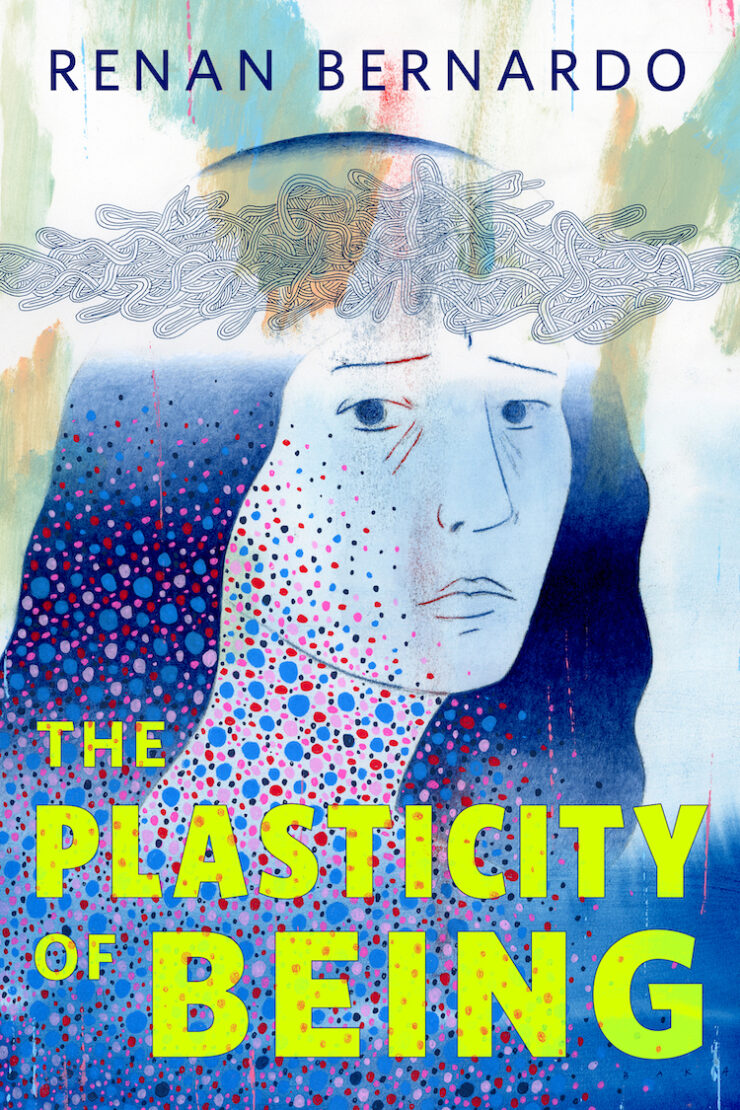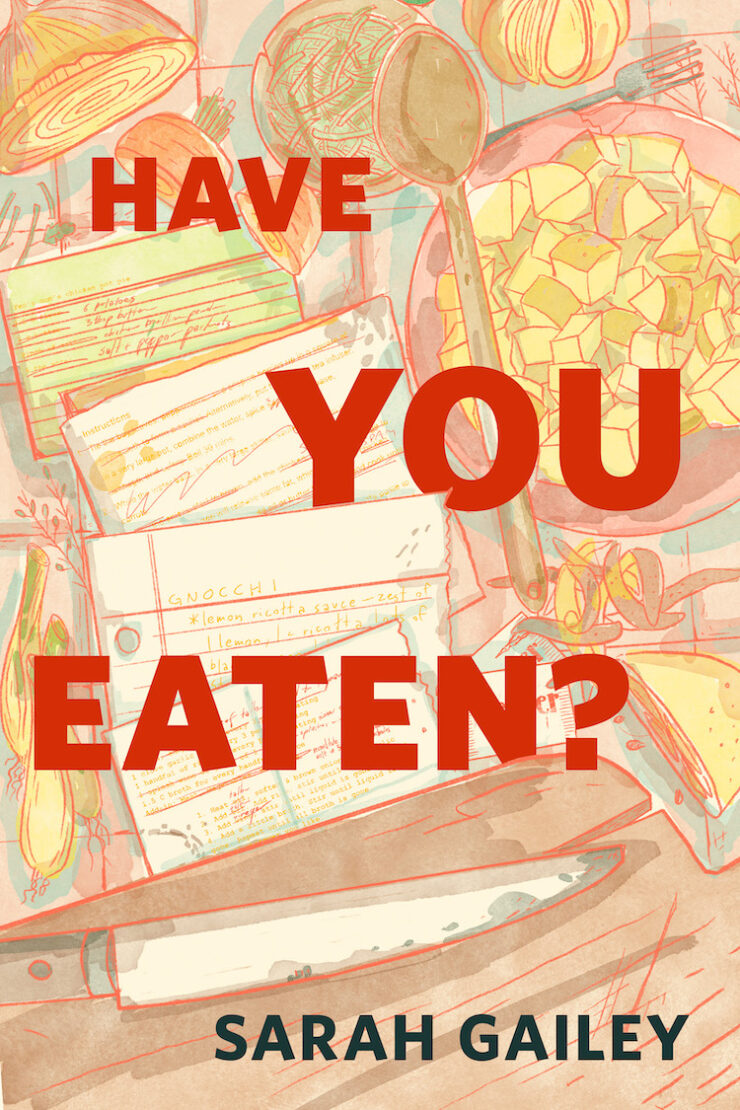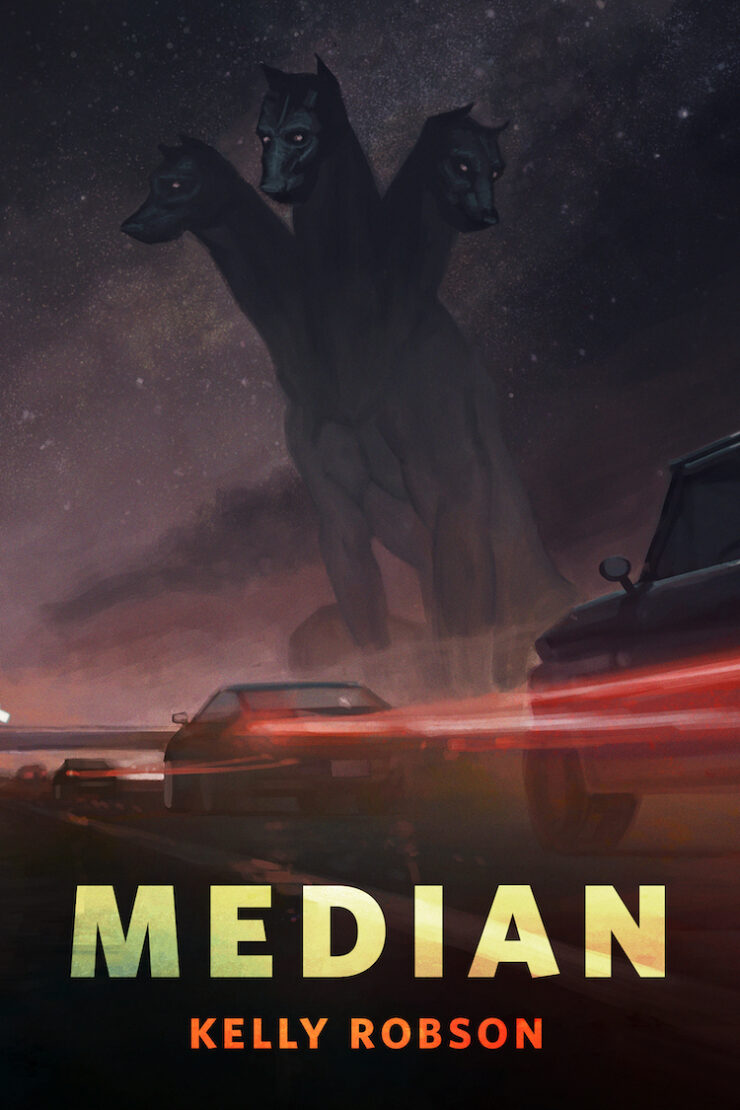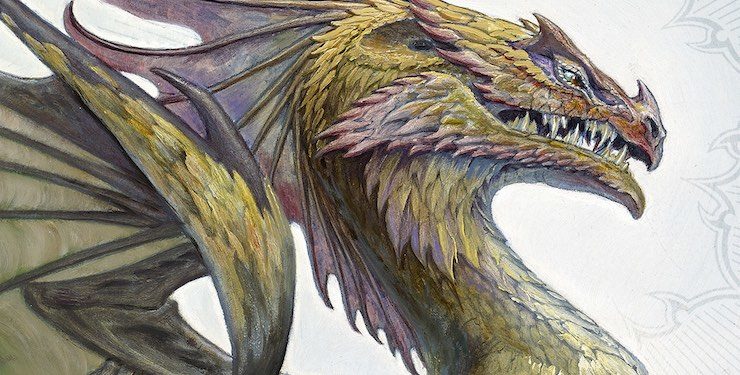When someone asks me for my personal favorite fantasy series, I usually hem and haw for a while and try to sneak at least two or three extra series into my answer. But if you were to force me, under threat of violence, to trim it down to just one, it would be Steven Brust’s Vlad Taltos series. Vallista, the fifteenth novel in the long-running series, is due out on October 17th, making this an excellent time to try and convert some new readers to the Gospel of Taltos.
Explaining what exactly is so wonderful about this series is tricky, partly because it’s so unique and partly because it’s hard to do without including huge spoilers, but at its heart it’s the story of Vlad Taltos, a human assassin living in the Dragaeran Empire, as well as the story of the Dragaeran Empire itself.
Buy the Book
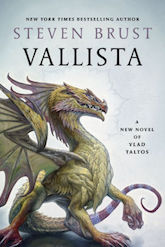

Vallista
At this point you may be groaning “not another assassin,” but let me assure you that Vlad is not your typical run-of-the-mill hood-wearing killer-for-hire that seemed to be on every other fantasy cover a few years back. Vlad is actually one of the most fascinating protagonists in current fantasy. At the start of the series, he’s a smart-ass, bon-vivant assassin and minor crime boss who enjoys good food and wine and has a great sarcastic sense of humor. A good part of the fun of reading this series is following the constant wise-cracks between Vlad and his reptilian familiar Loiosh. (“You’re pretty smart for a mammal, boss.”) As the series progresses, you learn more about Vlad’s past, putting his choice of occupation in an entirely new light, and you also see Vlad evolve into a surprisingly complex character. (On a personal note, as someone who’s been reading these novels for a couple of decades now, I find that my take on Vlad has evolved considerably as I’ve matured as a person and a reader.)
Dragaerans are basically tall humanoids who use sorcery and live for millennia. This may make you assume they’re like elves—and indeed some humans, like Vlad’s wonderful grandfather, refer to them as “elfs”—but the reality is far more surprising and unique. (This is where it’s very hard not to go into spoiler territory, so let’s just join Vlad’s “Noish-Pa” and think of them as elves for now.)
The Dragaeran Empire is an ancient society divided into seventeen Great Houses which all bear the name of, and some resemblance to, a real or mythical animal. So we have the Houses of the Orca and the Hawk, but also the Houses of the Dzur, Dragon, and Jhegaala. Humans aren’t part of the Dragaeran Empire, but Vlad’s father bought his son a title in the House of Jhereg, which is named after a reptilian scavenger and is basically the crime syndicate of the Empire. The Great Houses take turns running the Empire according to the Great Cycle; as the series begins, we’re just a few centuries into the reign of Empress Zerika of the House of the Phoenix.
Here’s the thing, though: I could go on for ages describing the more intricate details of this fantasy universe, but that’s only one of many reasons why these books are so much fun. Another reason is the way the series is structured, because the books weren’t written according to the internal chronology. The second novel (Yendi) takes place before the first one (Jhereg). The events described in Jhegaala, published in 2008, take place right between two books published over a decade earlier (Phoenix and Athyra), and if I understand correctly (not having read it yet), the forthcoming new novel Vallista takes place right before Hawk, which was published right before it.
If that sounds confusing, don’t worry: the details will fall into place as you progress through the series. Readers used to try to rearrange the novels and read them according to the internal chronology, but that became almost impossible when Dragon (1998) switched back and forth between separate branches of the timeline in each chapter of the novel. To preserve your sanity, I sincerely recommend just reading them in publication order.
Speaking of reading order: aside from the fifteen novels in the core series so far, there are also the “Khaavren Romances,” a trilogy (in which the third novel consists of three volumes by itself, so there are actually five of them) set several hundred years before the main series. Because Dragaerans live for millennia, several characters appear in both series, experiencing things that to Vlad (and most readers) will feel like historical events come to life. This is a very odd experience, only heightened by the narrator of the Romances, the esteemed Paarfi of Roundwood, whose incredibly verbose style (reminiscent of Alexandre Dumas, as the books’ titles suggests) takes some getting used to. There’s much more that can be written about these books—they really deserve a separate article—but just to return to the reading order: as with almost all prequels, don’t start with the Khaavren Romances. If you want to stick with publication order, the first one (The Phoenix Guards) was published between Phoenix and Athyra, or otherwise you can pretty much pick them up when you’ve read at least a few books in the main series. (For completion’s sake, there’s also The Brokedown Palace, a standalone novel set in Fenario, east of the Empire. I just now realize this may be the only novel by Brust I’ve never read, so I can’t really talk about how it fits into the series, but it’s clearly connected and I clearly need to read it.)
But back to the main series! Each novel (except, so far, Taltos) is named after one of the seventeen Dragaeran Houses, and in most cases, Vlad takes on some of the characteristics and attributes of that House throughout the novel, so e.g. in Dragon he ends up a soldier, and in Issola he becomes remarkably courteous. In Jhereg, Brust even applies this technique on the chapter level: each chapter begins with a quotation that connects back to one of the Houses, in the same order they appear in the Cycle, and Vlad does or says something that’s reminiscent of that House.
Buy the Book
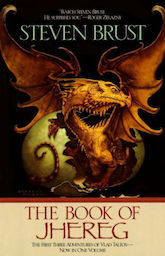

The Book of Jhereg
Brust also likes to play around with the internal structure of each novel in utterly delightful ways. My favorite example is Teckla, which starts off with a list of instructions for Vlad’s launderer-tailor. (“1 grey knit cotton shirt: remove wine stain from rt sleeve, black tallow from lft & repair cut in rt cuff.”) Each chapter starts off with a line from this (literal) laundry list and, at some point in the chapter, you find out how that item of clothing was damaged. Other novels in the series are structured around the menu for an elaborate meal (no one describes food as mouth-wateringly as Brust does, especially in the Valabar’s scenes in Dzur) or the various steps for casting a spell.
Now here’s the oddest thing about this series for me. Even though Brust is performing the literary equivalent of flying trapeze work with all his structural tricks and his convoluted chronology, the actual novels themselves are short (most of my ratty old paperbacks are around 300 pages), tightly written, and purely entertaining. You can read most of them in a few hours. Because the books are mostly self-contained, over the years they’ve started functioning similarly to Terry Pratchett’s Discworld series for me: quick and entertaining novels that are still rewarding after multiple readings.
For a series that’s been going for over thirty years now (Jhereg was published in 1983!), it’s stayed remarkably consistent, so if all this enthusiastic rambling intrigued you, I recommend picking up The Book of Jhereg, an omnibus edition of the first three novels in the series.
Stefan Raets reads and reviews science fiction and fantasy whenever he isn’t distracted by less important things like eating and sleeping. His (sadly neglected) website is Far Beyond Reality.


